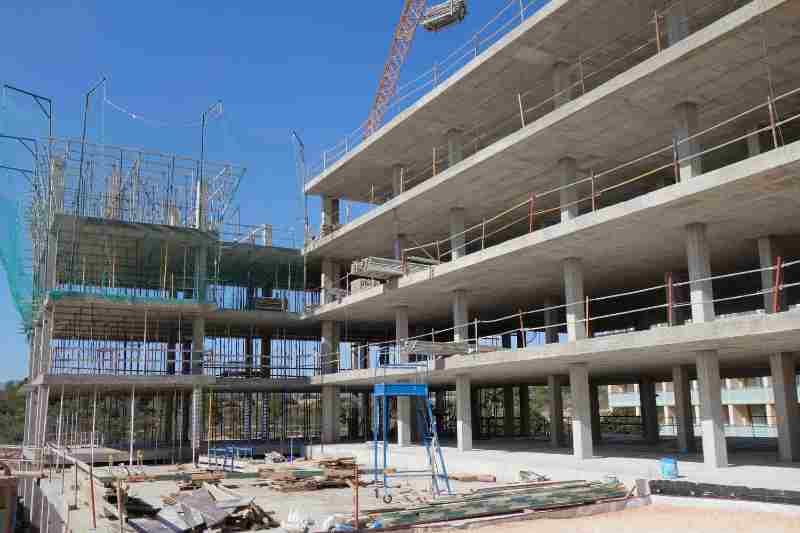
Disclaimer: This content is for informational purposes only, you should not construe any such information as legal, tax, investment, financial, or other advice. Nothing contained on our site constitutes a solicitation, recommendation, endorsement, or offer by ButterflyMX or any third-party service provider. ButterflyMX is not a financial adviser. You should always seek independent legal, financial, taxation, or other advice from a licensed professional.
Financing real estate is a task muddy with jargon and vague explanations. This can be frustrating when you want to figure out how you should lease the property you want and which type of commercial lease will provide the best value.
In this post, we break down the types of commercial leases to help you finance your commercial property rental. First, learn what commercial leases are, then the five most common types. Finally, you’ll discover how to choose the right one for you.
In this post, discover:
- What is a commercial lease?
- What is the most common type of commercial lease?
- 5 types of commercial leases
- How do I choose the right type of commercial lease for my business?
What is a commercial lease?
A commercial lease is a financial agreement between a landlord and a tenant for commercial real estate rentals. Many commercial leases are long-term, lasting up to 10 years or longer.
You’ll sign a commercial lease to rent:
- Warehouses
- Retail spaces
- Office buildings
- Restaurants
- Industrial complexes
- Commercial rental property
Additionally, common terms of a commercial lease include:
- Detailed descriptions of how the property can be used
- Taxes
- Insurance premiums
What are the benefits of commercial leases?
In order to understand the types of commercial leases, you must know the benefits of entering such a transaction.
Benefits of commercial leases include:
- Stability. Unlike residential leases, commercial leases provide more stability for tenants. Specifically, they offer a long-term safety net for businesses looking to stay put for extended periods.
- Negotiability. Commercial leases empower tenants to negotiate their terms. Some of the most popular types of negotiations involve responsibility for maintenance. This can be good for tenants without the funds necessary for maintenance costs.
- Tax benefits. Taxes are an unfortunate yet real factor in business finance. The benefit of certain commercial leases includes the opportunity for tenants to write their rent off as a business expense.
- Flexibility. It’s not uncommon for businesses to grow and evolve to meet consumer needs and desires. In this case, commercial leases allow tenants to either end an agreement or renegotiate the terms with a landlord.
What is the most common type of commercial lease?
The most common type of commercial real estate lease is a triple net lease (NNN). In this type of lease, tenants are often responsible for maintenance costs, property taxes, and insurance.
5 types of commercial leases
There are a specific number of unique commercial lease agreement options between landlords and tenants. Before entering into a lease, it’s important to understand your choices.
Five commercial lease options are:
1. Triple net lease
As previously mentioned, the most common type of commercial lease is a triple net lease. In a triple net lease, tenants are the ones responsible for operational costs such as property insurance, taxes, and maintenance.
At first glance, a triple net lease might not seem beneficial to tenants. However, when you take a closer look, it can actually offer some positive outcomes.
Benefits of triple net leases for tenants include:
- Negotiating power results in cutting costly services that aren’t needed.
- Longer terms result in greater stability and security for one’s business.
- More control of property maintenance and lease terms as a result of greater cost responsibility.
2. Ground lease
A ground lease is simply an agreement where tenants pay rent for a piece of land they can build on. The lifespan of a ground lease is typically 20 to 40 years.
With this type of lease, tenants are not only responsible for the rent of the land but also the construction and maintenance of the buildings in question. It’s important to note that with a ground lease, any improvements made on the property revert back to the landlord at the end of the lease term.
Ground leases are not a one-size-fits-all option for tenants. Anyone considering one should weigh their options and negotiate their terms firmly for their desired outcome.

3. Gross lease
In a gross lease agreement, landlords are responsible for expenses, including maintenance, property tax, and insurance. Meanwhile, tenants are only responsible for paying the agreed-upon rent.
If this type of lease sounds too good to be true, it may be. In most cases, a gross lease spells simplicity but can also mean less autonomy. So, research the details of the terms and your legal obligations to them before signing.
4. Modified gross lease
Conversely, a modified gross lease is one in which a tenant and landlord divide costs. Tenants will take on the total amount of agreed-upon rent, and then they pay portions of the expenses.
In this leasing option, tenants enjoy more control than in a regular gross lease.
5. Percentage lease
In a percentage lease, a tenant’s rent is calculated as a percentage of their gross sales.
Tenants who own and operate a retail store with a high net operating income should have no problems finding a landlord to agree to this type of lease. The reason is that the landlord can expect to benefit from their tenant’s success.
In a percentage lease, tenants can expect shared risk and reward, flexibility, and a lower cost than traditional leases.
Discover more commercial real estate tips:
How do I choose the right type of commercial lease for my business?
There are a number of ways you can choose the right type of commercial lease and also negotiate the best terms.
Considerations when choosing a commercial lease:
- Know your budget. Your financial situation will determine which lease is most beneficial for you. If your cash flow is lower, a lease with fewer out-of-pocket costs may be your best option.
- Keep records. One of the best ways to negotiate terms in your favor is by keeping extensive records. Moreover, real estate metrics such as cash flow and occupancy costs will help you negotiate better terms.
- Seek advice. Lastly, never enter a financial agreement without seeking legal and financial advice — especially if you’re new to commercial real estate leasing. Always consult your legal team before signing a document.
Takeaways
- Commercial leases are legal agreements between tenants and landlords for commercial real estate rentals such as retail, multifamily housing, and office spaces.
- The benefits of commercial leasing include easy budgeting, stability, and tax benefits.
- The most common type of commercial lease is the triple net lease.
- Other types of commercial leases include ground leases, gross leases, modified gross leases, and percentage leases.
- Factors to help you choose a lease include knowing your budget, keeping detailed records, and seeking legal advice.







